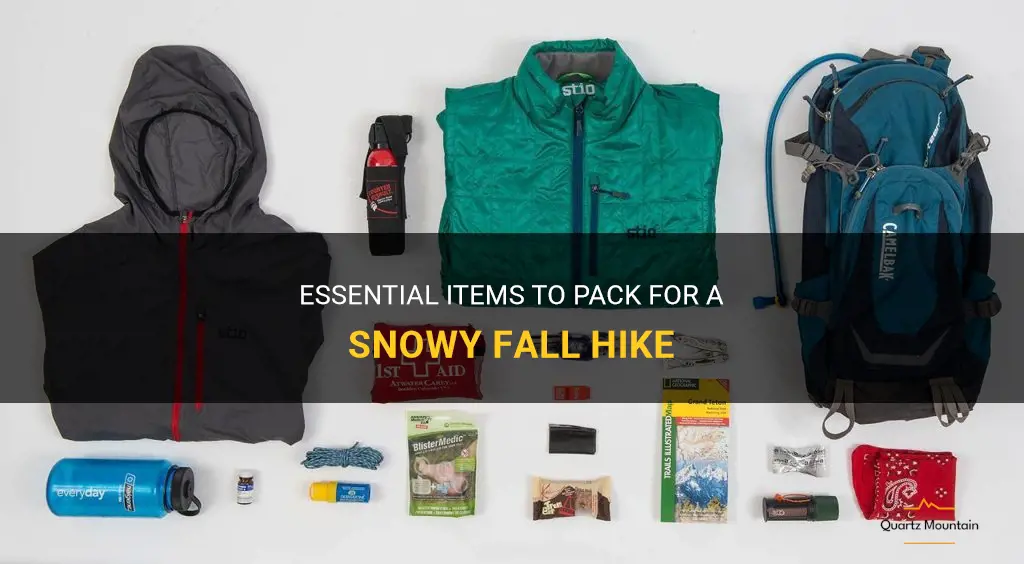
Fall is upon us, and with its arrival comes the opportunity to embark on some truly magical snowy hikes. Whether you're a seasoned hiker or just getting started, it's essential to pack the right gear to ensure a safe and enjoyable adventure on the trails. From insulated clothing to sturdy boots, this article will guide you through the must-have items for a snowy fall hike. So grab your backpack and get ready to embrace the beauty of nature in all its frosty glory.
| Characteristics | Values |
|---|---|
| Clothing | - Warm layers such as thermal underwear, fleece jackets, and insulated pants. - Waterproof and windproof outer shell jacket and pants. - Insulated waterproof gloves or mittens. - Warm and moisture-wicking socks. - Sturdy and insulated hiking boots. |
| Accessories | - Hat or beanie to keep your head warm. - Scarf or neck gaiter to protect your neck from cold winds. - Sunglasses to protect your eyes from sun glare on snow. - Sunscreen to protect your skin from harmful UV rays. - Lip balm to prevent chapped lips. |
| Backpack | - Sturdy backpack with a waist belt for proper weight distribution. - Backpack rain cover to protect your gear from rain or snow. - Pack liner or waterproof bags to keep your belongings dry. |
| Equipment | - Hiking poles for stability and balance on icy or slippery terrain. - Ice traction devices (such as crampons or traction cleats) for grip on icy surfaces. - Headlamp or flashlight with extra batteries. - Map, compass, and/or GPS device for navigation. |
| Food and Water | - High-energy and non-perishable snacks (e.g., energy bars, nuts, dried fruits). - Water bottles or hydration reservoir with enough capacity for the hike. - Water purification method (e.g., water filter, water purification tablets). |
| Safety | - First aid kit with essential supplies. - Emergency whistle and signal mirror. - Fire starter and waterproof matches. - Multi-tool or knife. - Emergency shelter (such as a lightweight bivvy or emergency blanket). |
| Communication | - Fully charged cell phone for emergencies. - Portable charger or extra batteries. - Local trail maps or hiking guidebooks. - Emergency contact information. - Personal identification. |
What You'll Learn
- What are the essential clothing items to pack for a fall hike with the possibility of encountering snow?
- Are there any specific types of footwear that are recommended for a fall hike with potential snow?
- What types of accessories, such as gloves or hats, should be included in a fall hiking pack for snowy conditions?
- Are there any specific safety items, like ice cleats or crampons, that should be included in a pack for a fall hike with possible snow?
- Are there any specific food or hydration recommendations for a fall hike with the potential for encountering snow?

What are the essential clothing items to pack for a fall hike with the possibility of encountering snow?
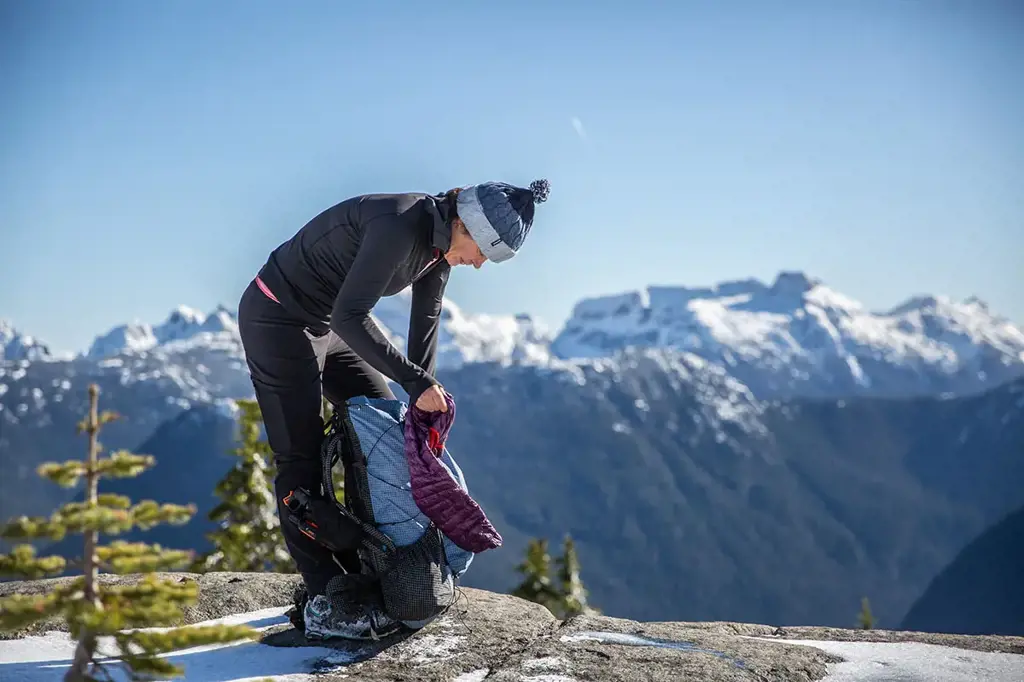
Fall is a beautiful time to go hiking as the leaves change color and the weather cools down. However, it's important to be prepared for the possibility of encountering snow on your hike. Here are some essential clothing items to pack for a fall hike with the possibility of encountering snow:
- Insulated Jacket: A good quality insulated jacket is a must-have for hiking in colder temperatures. Look for a jacket that is lightweight yet warm and can provide adequate insulation to keep you comfortable when the temperatures drop.
- Base Layers: Layering is key when hiking in colder weather, and base layers play a crucial role in keeping you warm. Opt for moisture-wicking base layers that can effectively regulate your body temperature and keep you dry. It's a good idea to pack both a long-sleeved top and bottom for maximum warmth.
- Fleece or Wool Sweater: A mid-layer such as a fleece or wool sweater can provide added warmth under your insulated jacket. These materials are known for their excellent insulation properties and can retain heat even when wet.
- Waterproof Pants: A pair of waterproof pants is essential when there is a possibility of encountering snow on your hike. Look for pants that are both waterproof and breathable to keep you dry and comfortable throughout your hike.
- Insulated Gloves and Hat: To protect your extremities, it's important to pack a pair of insulated gloves and a warm hat. These items can help retain heat and prevent frostbite in cold temperatures.
- Hiking Socks: Invest in a good pair of hiking socks that are moisture-wicking and provide insulation. Cold and wet feet can quickly ruin a hike, so it's important to choose socks that can keep your feet dry and warm.
- Hiking Boots: A pair of waterproof and insulated hiking boots is essential for navigating through snow and slippery terrain. Make sure your boots have good traction and ankle support to prevent accidents on the trail.
- Gaiters: Gaiters are protective coverings that go over your boots and lower legs to provide added protection from snow, debris, and moisture. They can help keep your pants dry and feet warm, especially when hiking through snow.
- Sunglasses: Snow can reflect sunlight, leading to increased glare and potential eye damage. Pack a pair of polarized sunglasses to protect your eyes from harmful UV rays and improve visibility on your hike.
- Backpack: A well-equipped backpack is a must-have for carrying all your essential gear and clothing items. Look for a backpack with compartments and straps that can securely hold all your belongings and provide easy access when needed.
Remember to check the weather forecast before your hike and adjust your clothing choices accordingly. It's better to be over-prepared than to be caught unprepared in harsh weather conditions. Stay safe, enjoy the beautiful fall scenery, and have a great hike!
Essential Items to Pack for the Comrades Marathon
You may want to see also

Are there any specific types of footwear that are recommended for a fall hike with potential snow?
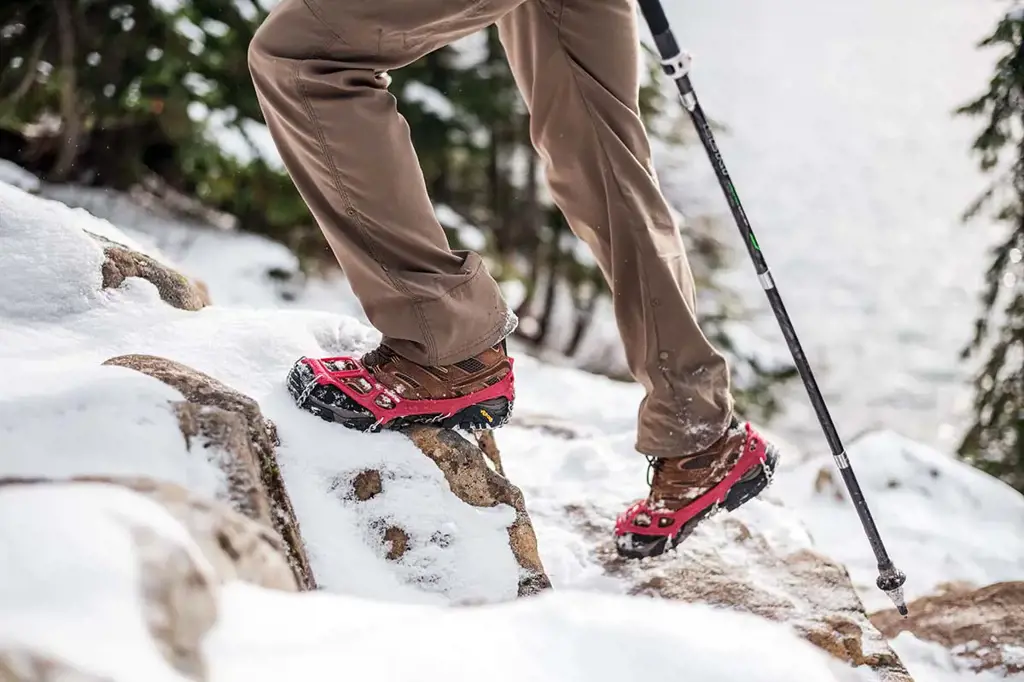
When going on a fall hike with potential snow, it is important to wear appropriate footwear to ensure comfort, stability, and protection. The right shoes or boots can make a significant difference in your hiking experience, allowing you to navigate through different terrains and weather conditions with ease.
One of the most popular types of footwear for fall hikes with potential snow is insulated hiking boots. These boots are designed to keep your feet warm and dry in cold and wet conditions. They often feature a waterproof upper material to prevent snow and water from seeping into the boot. Insulated hiking boots also provide good traction and support, making them suitable for uneven and slippery terrains.
Another option for a fall hike with snow is mountaineering boots. These boots are specifically designed for hiking in snowy and icy conditions. They have a stiffer sole and more rigid construction, providing excellent stability and support. Mountaineering boots also come with insulation, ensuring your feet stay warm throughout the hike. However, they may be bulkier and heavier than other types of hiking boots, so make sure to consider your comfort and preferences before choosing them.
If you prefer a more lightweight and flexible option, you can opt for hiking shoes with a waterproof and insulated design. These are similar to hiking boots but have a lower ankle height, offering more freedom of movement. However, keep in mind that hiking shoes may not provide as much ankle support and protection as hiking boots or mountaineering boots. So, if you plan to go on more challenging or steep hikes, it is advisable to choose boots with higher ankle support.
In addition to the type of footwear, it is also important to consider the traction on the sole. Look for shoes or boots with a deep lug pattern to provide better grip and prevent slips on snowy or icy surfaces. Vibram soles are a popular choice as they offer superior traction and durability.
When selecting footwear for a fall hike with potential snow, it is crucial to try them on and ensure a proper fit. The boots or shoes should provide enough room for your toes to wiggle while still fitting snugly around the heel and arch. Proper fit will help prevent blisters, discomfort, and potential foot injuries during your hike.
Here are a few examples of footwear that are recommended for a fall hike with potential snow:
- The Merrell Moab 2 Waterproof Hiking Shoes: These shoes are known for their waterproofness and good traction on various terrains. They offer a comfortable fit and are suitable for day hikes with light snow.
- The Salomon X Ultra 3 Mid GORE-TEX Hiking Boots: These boots provide excellent ankle support and are designed for hiking in wet and snowy conditions. They have a durable construction and offer reliable traction on icy surfaces.
- The Scarpa Mont Blanc GTX Mountaineering Boots: These boots are perfect for more advanced hikes and mountaineering expeditions in snowy conditions. They are insulated, have a rigid construction, and feature a crampon-compatible design for added safety.
Remember, different hikes and snow conditions may require different types of footwear. It is essential to consider factors such as the terrain, expected weather conditions, and personal preferences when choosing the right footwear for your fall hike with potential snow.
Essential Items for a Memorable Three Day Backpacking Adventure
You may want to see also

What types of accessories, such as gloves or hats, should be included in a fall hiking pack for snowy conditions?
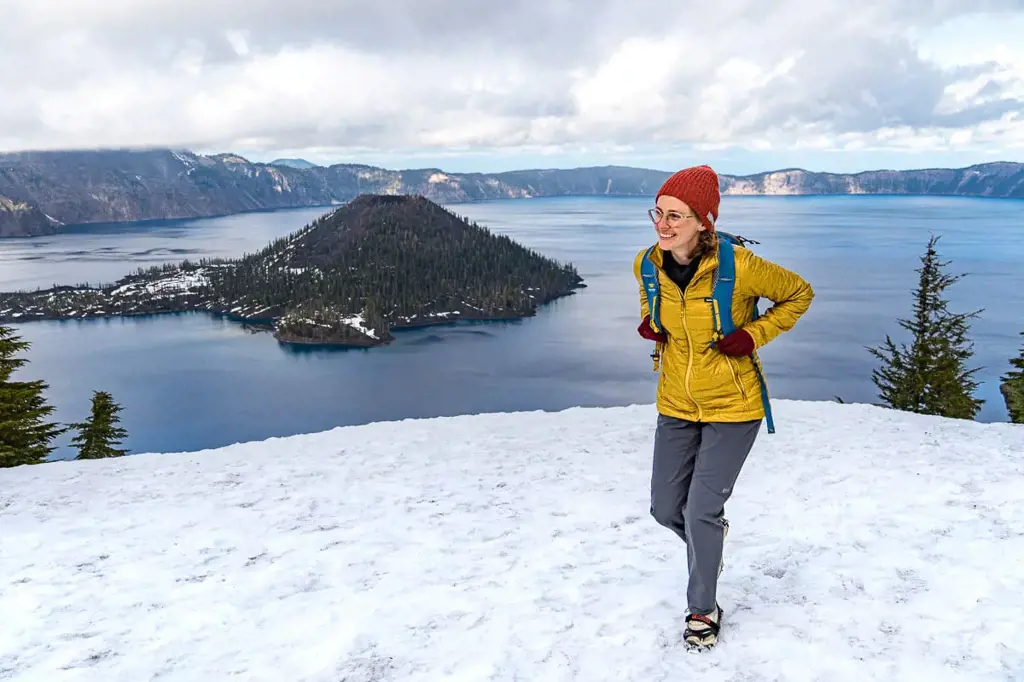
When embarking on a fall hiking trip in snowy conditions, it is crucial to pack the right accessories to ensure comfort, safety, and protection from the elements. Snowy conditions can present unique challenges, such as cold temperatures and slippery terrain, which require specialized gear. In this article, we will explore the types of accessories that should be included in a fall hiking pack for snowy conditions.
Gloves:
Gloves are essential for keeping your hands warm and protected from the cold. Look for waterproof and insulated gloves that provide both thermal insulation and dexterity. Waterproof gloves will keep your hands dry even if you come into contact with snow, while insulation will help retain heat. It's also advisable to choose gloves with a grip or textured palm for better handling of hiking poles or other equipment.
Hats:
A hat is vital for preventing heat loss from your head, which is a significant source of body heat loss. Opt for a beanie or a woolen hat that covers your ears, providing additional protection against the cold. Look for hats that are made from moisture-wicking materials to keep you dry if you perspire during strenuous hikes.
Socks:
Wearing the right type of socks is crucial during fall hikes in snowy conditions. Invest in quality thermal socks made from insulating materials such as wool or synthetic fibers designed for cold weather. These socks will help keep your feet warm, dry, and blister-free. It's also useful to have an extra pair of socks in your pack, in case they get wet.
Gaiters:
Gaiters are protective coverings that wrap around your ankles and lower legs. They are designed to keep snow, moisture, and debris out of your boots, thereby keeping your feet dry and preventing discomfort. Look for gaiters made from waterproof and breathable materials for optimal performance.
Sunglasses:
Snowy conditions can be harsh on your eyes due to reflective glare. Pack a pair of sunglasses with UV protection to shield your eyes from harmful rays. Furthermore, polarized lenses can help reduce glare and enhance visibility, improving your overall hiking experience.
Neck Gaiter and Face Mask:
Protecting your neck and face from icy winds and cold temperatures is crucial when hiking in snowy conditions. A neck gaiter, also known as a buff, can be worn around your neck or pulled up to cover your mouth and nose. It provides extra insulation and protection against the elements.
Hand and Toe Warmers:
Hand and toe warmers are disposable packs that can be activated to generate heat. They are particularly useful for extremely cold temperatures or long hikes. These warmers can be placed inside your gloves or boots to keep your extremities warm for several hours.
In summary, accessorizing appropriately for a fall hiking trip in snowy conditions is crucial for comfort and safety. Gloves, hats, socks, gaiters, sunglasses, neck gaiters, and hand and toe warmers are essential items to include in your hiking pack. By investing in the right gear, you can enjoy your hike while staying warm, dry, and prepared for the challenges posed by snowy conditions.
Essential Clothing Items to Pack for Fall in Santa Cruz
You may want to see also

Are there any specific safety items, like ice cleats or crampons, that should be included in a pack for a fall hike with possible snow?
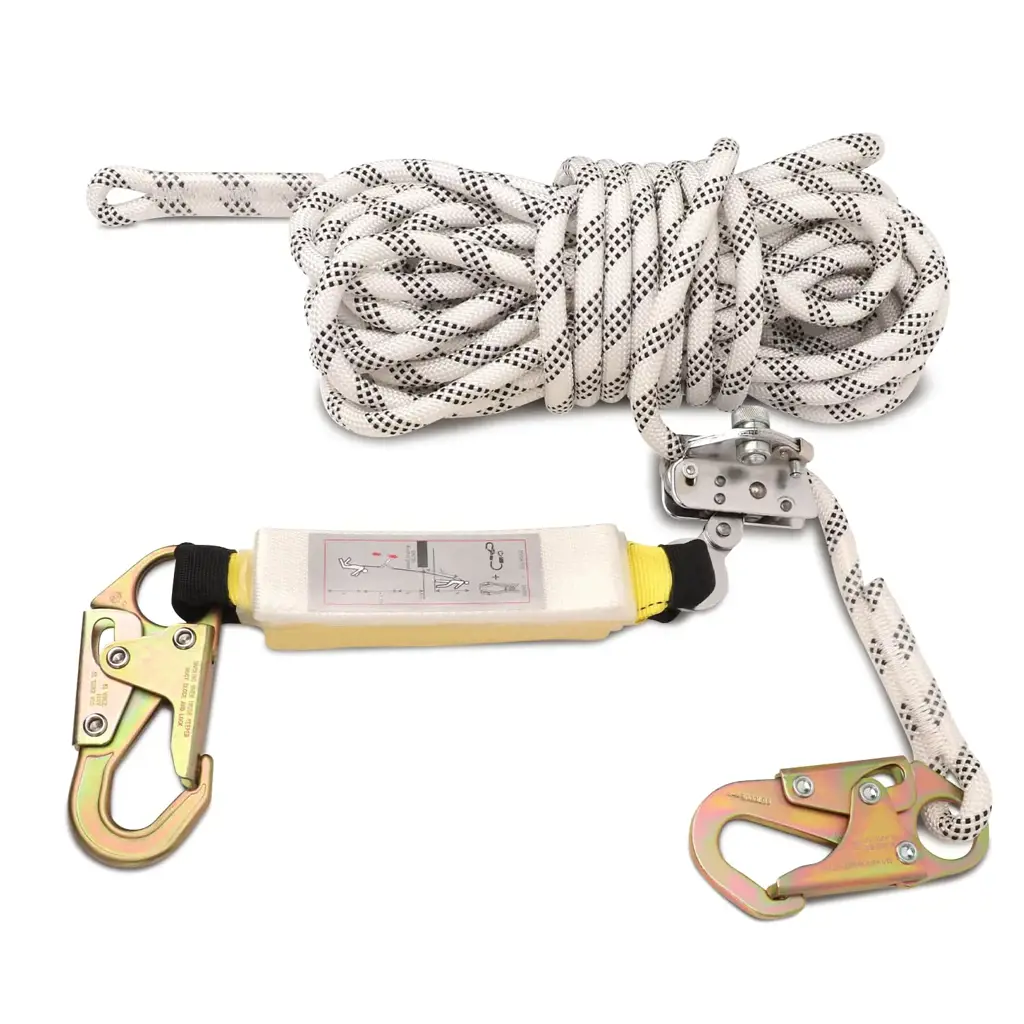
When venturing out on a fall hike with the possibility of encountering snow, it is essential to be prepared with the right safety gear. One of the most crucial items to include in your pack is a pair of ice cleats or crampons.
Ice cleats are essentially rubber or metal attachments that fit over your shoes or boots, providing extra traction on icy surfaces. They have small spikes or metal teeth that dig into the ice, giving you better stability and preventing slips and falls. These are particularly helpful when hiking on frozen or compacted snow, as they provide the necessary grip to navigate slippery terrain. Crampons, on the other hand, are more heavy-duty and have larger spikes that are designed for more technical or steep terrain, such as ice climbing or mountaineering.
When choosing between ice cleats and crampons, it's crucial to assess the difficulty level of the hike and the terrain you expect to encounter. If you are planning a relatively easy hike on mostly flat or moderately sloped trails, ice cleats should suffice. However, if you anticipate encountering steeper, more technical terrain, or if you plan to participate in winter mountaineering activities, crampons would be a better choice.
Aside from ice cleats or crampons, there are a few other safety items that you should consider including in your pack for a fall hike with possible snow. First and foremost, make sure to bring trekking poles or a hiking stick to provide additional stability and support, especially when navigating snowy and icy sections. These can help to prevent falls and reduce the strain on your legs and knees.
It's also a good idea to pack a small first aid kit that includes items such as band-aids, antiseptic ointment, blister pads, and pain relievers. Snowy and icy conditions can increase the risk of slips, falls, and minor injuries, so having these essentials on hand can be crucial in addressing any unexpected mishaps.
Finally, it is crucial to bring proper clothing and gear to stay warm and dry. This includes wearing layers of moisture-wicking and insulating clothing, such as thermal base layers, fleece or down jackets, and waterproof outer shells. Additionally, pack extra pairs of gloves and socks in case they become wet or damaged.
In conclusion, when embarking on a fall hike with the possibility of encountering snow, it is essential to equip yourself with the right safety gear. Ice cleats or crampons should be included in your pack, depending on the difficulty of the hike and the terrain you expect to encounter. Additionally, bring trekking poles or a hiking stick for added stability, a small first aid kit for any potential injuries, and proper clothing and gear to stay warm and dry. By being prepared and taking necessary precautions, you can enjoy a safe and enjoyable fall hike in snowy conditions.
Essential Items to Pack for a Baby's Day at the Beach
You may want to see also

Are there any specific food or hydration recommendations for a fall hike with the potential for encountering snow?
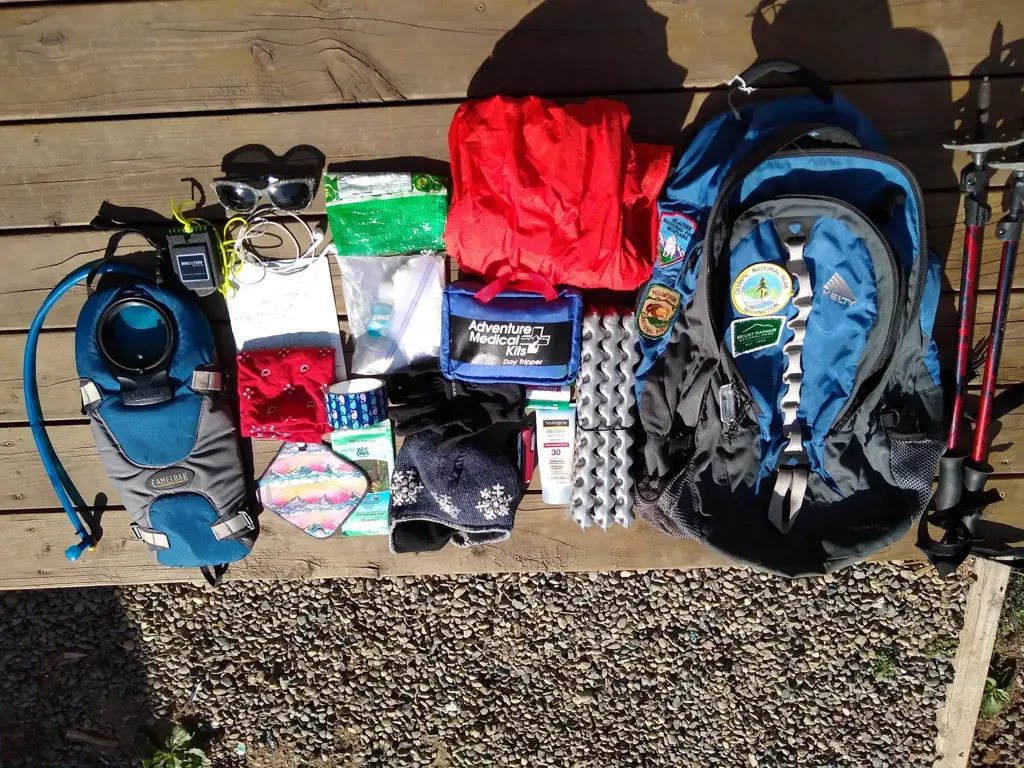
Fall hikes can be a beautiful and rewarding way to enjoy nature, but they also come with their own set of challenges. One challenge that hikers may face during a fall hike is the potential for encountering snow. While snow can add an extra layer of beauty to the landscape, it can also make the hike more difficult and dangerous. To ensure a safe and enjoyable hike, it is important to be prepared with the right food and hydration.
When heading out on a fall hike with the potential for encountering snow, it is important to take into consideration the cold weather and the physical demands of hiking in these conditions. The cold weather can increase your body's energy expenditure, and hiking in snow can be more physically demanding than hiking on dry ground. Therefore, it is recommended to bring high-energy and calorie-dense foods to keep your energy levels up.
Some examples of high-energy, calorie-dense foods that are suitable for a fall hike with the potential for snow include:
- Nut and seed mixes: These are a great source of healthy fats, protein, and carbs. They are also lightweight and easy to pack.
- Energy bars: Look for bars that are specifically designed for endurance activities, as these will often contain a good balance of carbs, fats, and protein.
- Dried fruits: These are a great source of natural sugars to provide quick energy. They are also lightweight and easy to snack on.
- Cheese: Cheese is high in calories and protein, making it a good option for hikers. It also does not require refrigeration, which makes it easy to pack.
In addition to high-energy foods, it is also important to stay hydrated during a fall hike with the potential for encountering snow. Despite the cold weather, dehydration can still occur as a result of increased respiration and sweat production. It is recommended to drink water regularly throughout the hike, even if you do not feel thirsty.
It can be more challenging to keep water from freezing in colder temperatures, so it is a good idea to insulate your water bottle by storing it in an insulated sleeve or wrapping it in an extra layer of clothing. Alternatively, you can opt for a thermos or insulated water bottle that is designed to keep liquids warm.
If you prefer to drink warm fluids during your hike, consider bringing a thermos of tea, hot chocolate, or soup. These warm beverages can provide comfort and hydration while also helping to keep you warm in colder temperatures.
In conclusion, when embarking on a fall hike with the potential for encountering snow, it is important to be prepared with the right food and hydration. High-energy, calorie-dense foods such as nut and seed mixes, energy bars, dried fruits, and cheese can help provide the necessary fuel for a challenging hike. Additionally, staying hydrated by drinking water regularly or opting for warm beverages in colder temperatures is crucial to prevent dehydration. By following these recommendations, hikers can enjoy a safe and rewarding fall hike in snowy conditions.
Essential Items to Pack for a European Adventure in June
You may want to see also
Frequently asked questions
When packing for a fall hike with some snow, it is essential to have warm layers, waterproof clothing, and proper footwear. Layering is important as it allows you to adjust your clothing based on the temperature. Start with a base layer made of moisture-wicking fabric to keep you dry. Add a warm mid-layer like a fleece or down jacket, and top it off with a waterproof and windproof outer layer. Ensure your pants are also waterproof or treated with a water repellent. It is important to wear sturdy, insulated, and waterproof boots to keep your feet warm and dry.
In addition to clothing and footwear, there are a few other items that should be included in your pack for a fall hike with some snow. It is important to bring extra socks, gloves, and a hat in case the ones you are wearing get wet or lost. A hat or balaclava that covers your ears and neck will provide extra warmth. Don't forget to pack a map and compass or a GPS device for navigation. Insulated water bottles or a thermos filled with hot beverages will help keep you hydrated and warm. Pack some high-energy snacks and a small stove if you plan to cook meals or hot drinks on the trail. Lastly, don't forget to pack a headlamp or flashlight in case your hike takes longer than expected.
Yes, there are a few important safety considerations to keep in mind for a fall hike with some snow. Make sure to check the weather forecast before heading out and be aware of any potential hazards or warnings. It is crucial to let someone know your hiking plans and approximate return time. Dress in layers to regulate your body temperature and stay dry. Always carry a first aid kit and know how to use it. Be cautious of slippery surfaces and use trekking poles if needed for stability. Watch out for signs of hypothermia and know how to recognize and treat it. Plan your hike so that you have enough daylight to complete it safely and consider turning back if conditions worsen.







